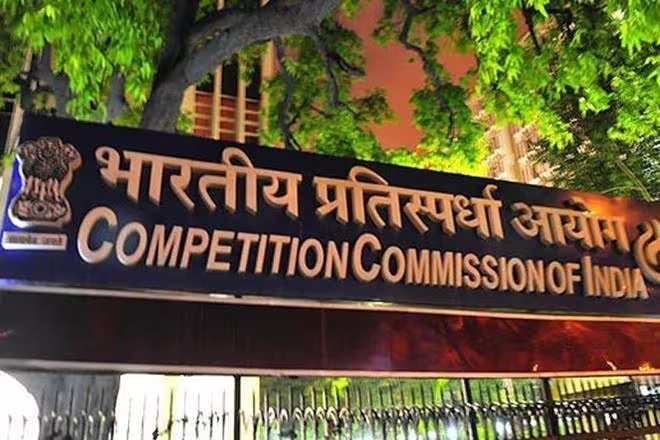dynamic business landscape, companies are continually seeking innovative ways to optimize their production processes. One such strategy that has gained remarkable popularity in recent years is contract manufacturing. This business practice allows businesses to collaborate with specialized contract manufacturers to produce goods, components, or products. In this article, we will explore the essential aspects of contract manufacturing, its advantages, disadvantages, and how to select the right contract manufacturer. We will also delve into the significance of Non-Disclosure Agreements (NDAs) in contract manufacturing. What Is Contract Manufacturing? Contract manufacturing has revolutionized the way companies produce goods, and it is essential to understand its core principles. Contract manufacturing involves partnering with specialized contract manufacturers to produce various goods, components, or products on behalf of a hiring company. To delve deeper, it’s crucial to know what a “contract manufacturer” is, as they are the cornerstone of this arrangement. In simple terms, a contract manufacturer is a third-party manufacturing firm with the expertise, infrastructure, and resources to produce goods based on the specifications provided by a hiring company. The process begins with a legally binding contract manufacturing agreement that defines the roles, responsibilities, and expectations of both parties. In essence, contract manufacturing is a collaborative business model in which a hiring company leverages the expertise and facilities of an external manufacturer to meet its production demands. Types of Contract Manufacturing 1. Private Label Manufacturing- In this form of contract manufacturing work, the contractor produces a finished product based on the specific requirements of the hiring company. The completed product is either sent to an inventory warehouse or directly to retail stores. Sometimes, these products are the result of the assembly of various components, which the contractor manages before shipping. This arrangement is well-suited for businesses with a clear product vision who want to outsource the entire production process. 2. Individual Component Manufacturing- In this category, contract manufacturing is responsible for creating a product manufactured from single component that will be integrated into a more complex final product. Their sole responsibility is the manufacturing of this component, one of many components developed during the product’s creation. Other contracted companies are responsible for assembling this component into the final product. This approach is beneficial for companies with some in-house manufacturing capabilities but cannot produce all the required components for their end product. 3. Labor or Service Subcontracting- In this scenario, contract manufacturers play a role as subcontractors, handling a specific part of a larger manufacturing process. They are hired by a general contractor in need of their specialized services. This is particularly useful for the production of intricate products, as contract manufacturers can offer cost savings and faster production cycles. 4. End-to-End Manufacturing- Similar to private label manufacturing, the product or component is entirely outsourced. However, in this case, the contract manufacturer is more involved in product design and offers insights to the product manager. Consequently, the hiring company isn’t solely responsible for specifications, and the contract manufacturer takes on a significant portion of the product design work. This arrangement is ideal for companies looking to rapidly-produce a cost-effective, quality product while sharing design responsibilities with the contract manufacturer. Contract Manufacturing in Different Industries 1. Pharmaceutical Contract Manufacturing- In the pharmaceutical industry, companies often outsource the production of drugs, medicines, and supplements to specialized contract manufacturers. This approach enables pharmaceutical firms to concentrate on research and development while contract manufacturers handle the entire production process. 2. Metal Fabrication Contract Manufacturing- Companies operating in the metal fabrication industry may choose to outsource the production of components or parts. Contract manufacturers in this sector possess the manufacturing equipment and expertise required to produce high-quality metal components efficiently. 3. Food Industry Contract Manufacturing- In the food industry, businesses often collaborate with contract manufacturers to produce a wide range of food products for multiple customers, from snacks and beverages to frozen meals. This practice offers cost savings and ensures that the final product meets industry standards. 4. Electronics Contract Manufacturing- Electronics companies may hire contract manufacturers to produce circuit boards, devices, or other electronic components. Contract manufacturers have the proper equipment and expertise to produce electronic products efficiently. 5. Automotive Contract Manufacturing- Car manufacturers may outsource certain components or production steps to contract manufacturers, resulting in cost savings and allowing the car companies to focus on their core competencies. Benefits of Contract Manufacturing 1. Cost Savings- Outsourcing production to a contract manufacturer often results in significant cost savings. These savings can come from reduced labor costs, economies of scale, and the ability to share overhead costs with the contract manufacturer. Additionally, companies save money by avoiding the need to invest in their manufacturing facilities and equipment. 2. Quality Control- Contract manufacturers are experts in their respective fields and have the necessary knowledge and equipment to ensure high product quality. By partnering with a reputable contract manufacturer, businesses can benefit from improved product quality, meeting or even exceeding quality standards. 3. Production Efficiency- Contract manufacturers have the infrastructure and expertise to produce large quantities of products efficiently. This is especially valuable when companies face production demands that exceed their in-house capabilities or require a rapid turnaround to meet production deadline. 4. Focus on Core Competencies- By outsourcing production to contract manufacturers, businesses can concentrate on their core competencies. This allows businesses save money and to allocate more resources to research, development, marketing, and other aspects of their business. 5. Intellectual Property Protection- When partnering with a reputable contract manufacturer, you can be confident that they will protect your intellectual property and trade secrets. Clear provisions regarding IP protection can be included in the contract manufacturing agreement to ensure that your company’s proprietary information is secure. 6. Risk Mitigation- Contract manufacturing can help businesses mitigate risks associated with inventory costs, market fluctuations, and unpredictable changes in demand. Companies can adjust production quantities as needed, avoiding excess inventory or stock shortages. 7. International Expansion- If you’re considering entering international markets, contract manufacturing can help you overcome cultural differences and market entry barriers.

